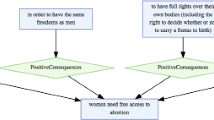Abstract
The chapter outlines the development of support for inference chains in the CIDOC Conceptual Reference Model family of standards. It illustrates the capabilities available in CRMbase and notes the limitation that the evolution of any assertion or knowledge revision cannot be adequately documented. It then continues by detailing the extended facilities delivered by CRMinf that address this short-coming. Next it considers the added potential to document the scholarly reading of texts that are considered specious and finally looks to future work on the extension.
Access this chapter
Tax calculation will be finalised at checkout
Purchases are for personal use only
Similar content being viewed by others
References
Boutsika, K. 2010. Computer supported collaborative factual argumentation and conflict resolution (Masters of Science thesis). Department of Computer Science, University of Crete.
Bruseker, R., Daskalaki, M., Doerr, M., & Stead, S. (2018). 2018 is that a good concept? In Mieko Matsumoto and Espen Uleberg (Eds.), CAA2016: Oceans of data proceedings of the 44th conference on computer applications and quantitative methods in archaeology.
Crofts, N., Doerr, M., Gill, T., Stead, S., & Stiff, M. (2003). Definition of the CIDOC conceptual reference model. Version 3.4.2.
Doerr, M., Kritsotaki, A., & Boutsika, K. (2011). Factual argumentation—A core model for assertions making. Journal on Computing and Cultural Heritage, 3(3), 34. https://doi.org/10.1145/1921614.192161
Gardin, J-CL. 1990. The structure of archaeological theories. In Studies in modern archaeology. Vol 3. Mathematics and information science in archaeology: A flexible framework (pp. 7–25). Bonn.
Μαρινάτος, Σ. (1974). Ανασκαφαί Θήρας VI. ΒΑΕ 64, πιν.38β. H Εν Αθήναις Αρχαιολογική Εταιρεία.
Μιχαηλίδου, Α. (2001). Ακρωτήρι Θήρας. Η μελέτη των ορόφων στα κτήρια του οικισμού. ΒΑΕ 212, Αθήνα: H Εν Αθήναις Αρχαιολογική Εταιρεία.
Author information
Authors and Affiliations
Corresponding author
Editor information
Editors and Affiliations
Rights and permissions
Copyright information
© 2023 The Author(s), under exclusive license to Springer Nature Switzerland AG
About this chapter
Cite this chapter
Stead, S. (2023). A New Approach to Interoperable Argumentation Documentation. In: Gonzalez-Perez, C., Martin-Rodilla, P., Pereira-Fariña, M. (eds) Discourse and Argumentation in Archaeology: Conceptual and Computational Approaches. Quantitative Archaeology and Archaeological Modelling . Springer, Cham. https://doi.org/10.1007/978-3-031-37156-1_2
Download citation
DOI: https://doi.org/10.1007/978-3-031-37156-1_2
Published:
Publisher Name: Springer, Cham
Print ISBN: 978-3-031-37155-4
Online ISBN: 978-3-031-37156-1
eBook Packages: Behavioral Science and PsychologyBehavioral Science and Psychology (R0)




